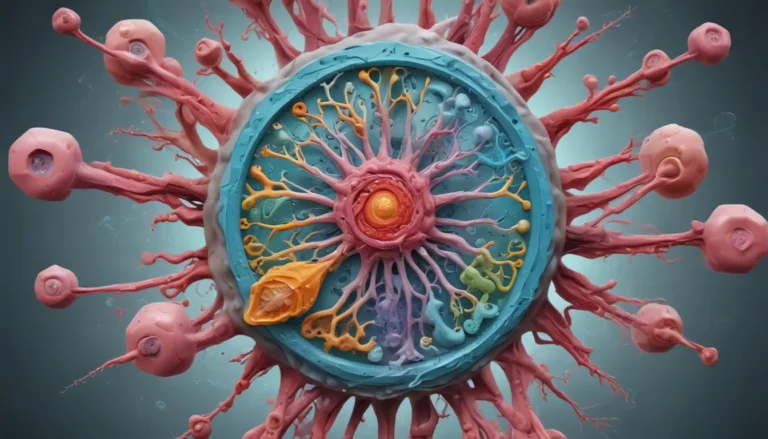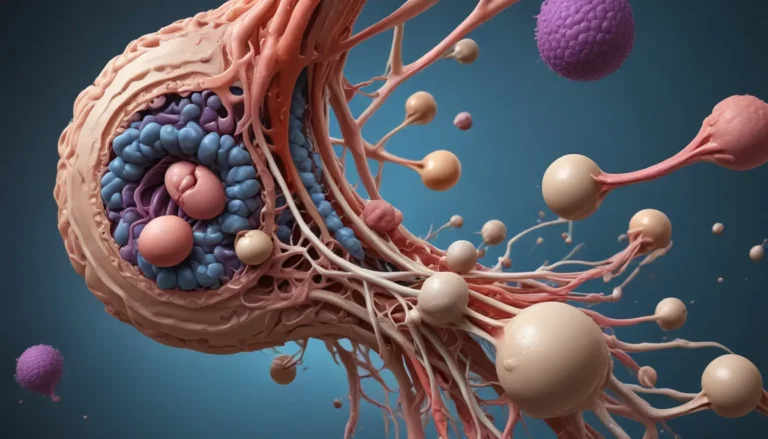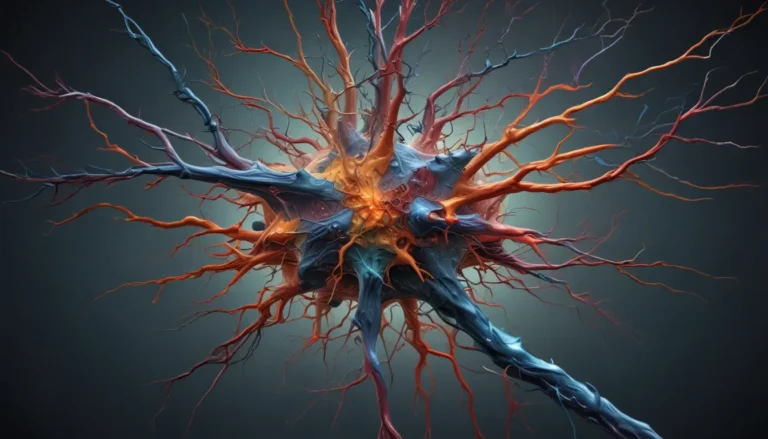A Note About Images: The images used in our articles are for illustration purposes only and may not exactly match the content. They are meant to engage readers, but the text should be relied upon for accurate information.
The Notch signaling pathway stands as a cornerstone in the intricate world of biological processes, guiding the development and maintenance of multicellular organisms. Since its discovery in the early 20th century, researchers have delved deep into its complexities, uncovering its involvement in a myriad of cellular activities, from cell fate determination to immune system regulation. In this article, we will embark on a journey to unravel 17 astounding facts about the Notch signaling pathway, shedding light on its significance and role in various aspects of life.
Understanding the Notch Signaling Pathway
The Notch signaling pathway serves as a vital conductor orchestrating the symphony of life, influencing cells in embryonic development, immune function, and disease. It acts as a crucial player in the biological orchestra, intricately shaping our bodies and holding the key to potential medical breakthroughs. Its role extends beyond a mere pathway, as it serves as a cellular multitasker, influencing everything from brain development to cancer growth.
A Journey through Notch Signaling Pathway’s Functions
1. Crucial Role in Embryonic Development
The Notch signaling pathway plays a pivotal role in regulating various processes during embryonic development, including cell fate determination and tissue patterning. It serves as a highly conserved mechanism that guides the intricate dance of life before birth.
2. Control of Cell Differentiation
Notch receptors and ligands are key players in controlling cell fate decisions, promoting differentiation into specific cell types during development and tissue regeneration. Their interactions govern the path cells take in forming diverse tissues and organs.
3. Essential for Neurogenesis
In the realm of neurogenesis, Notch signaling stands as a critical player in generating and maintaining neurons in the central and peripheral nervous systems. It plays a pivotal role in shaping the brain and spinal cord during development.
4. Regulation of Immune Cell Development
Notch signaling is crucial for the differentiation and maturation of various immune cells, including T cells, B cells, and natural killer cells. This pathway plays a vital role in ensuring a well-functioning immune system.
5. Implication in Cancer
The Notch signaling pathway’s aberrant activation is observed in many types of cancer, contributing to tumor initiation, growth, metastasis, and resistance to chemotherapy. Understanding this link opens doors to novel therapeutic approaches in cancer treatment.
6. Involvement in Cardiovascular Development
During heart development, Notch signaling influences critical processes such as cardiac progenitor cell differentiation, valve formation, and blood vessel remodeling. It ensures proper cardiovascular structure and function for optimal heart health.
7. Maintenance of Stem Cells
Notch signaling plays a crucial role in the self-renewal and maintenance of stem cells in various tissues and organs. It regulates their proliferation, differentiation, and tissue regeneration capabilities, allowing for tissue repair and homeostasis.
Delving Deeper into Notch Signaling Pathway Mechanisms
8. Mediated by Ligand-Receptor Interactions
The activation of Notch signaling pathway relies on the binding of transmembrane ligands such as Delta-like and Jagged to Notch receptors. This binding triggers a series of proteolytic cleavages and release of the Notch intracellular domain (NICD).
9. Transcriptional Activity of NICD
Upon release, the Notch intracellular domain translocates to the nucleus, where it forms a transcriptional activation complex. This complex regulates target gene expression, leading to cellular responses and differentiation processes.
10. Diverse Ligands and Receptors
The Notch signaling pathway consists of a variety of ligands and receptors, allowing for fine-tuned regulation of cell signaling and differentiation processes in different tissue contexts. This diversity enables specificity in cellular responses.
11. Influence of Post-Translational Modifications
Various post-translational modifications such as glycosylation, ubiquitination, and phosphorylation play crucial roles in modulating the activity and stability of Notch receptors and ligands. These modifications fine-tune the pathway’s signaling outcomes.
12. Crosstalk with Other Signaling Pathways
Notch signaling pathway interacts with various other signaling pathways like Wnt, Hedgehog, and BMP, forming intricate networks that regulate diverse cellular processes. This crosstalk ensures coordinated cellular activities and responses.
13. Regulation by Negative Feedback Mechanisms
Maintaining the balance and fine-tuning of Notch signaling pathway involves negative feedback mechanisms, including upregulation of Notch pathway inhibitors. These feedback loops help regulate the intensity and duration of Notch signaling activity.
14. Involvement in Angiogenesis
Notch signaling plays a critical role in controlling the formation of new blood vessels during angiogenesis, ensuring proper tissue perfusion and supporting organ development and repair. It facilitates the intricate network of blood vessels essential for life.
15. Conservation Across Species
The core components of the Notch signaling pathway are highly conserved from flies to humans, highlighting its fundamental importance in various biological processes across evolution. This conservation underscores its critical role in shaping life.
16. Spatial and Temporal Regulation
The activation and inhibition of Notch signaling pathway are precisely regulated in a spatial and temporal manner during development. This precise control ensures proper cell fate decisions and tissue morphogenesis, contributing to the formation of complex organisms.
17. Association with Developmental Disorders
Genetic mutations or dysregulation of the Notch signaling pathway can lead to developmental disorders such as Alagille syndrome and CADASIL. These conditions underscore the pathway’s critical role in normal embryonic development and organ formation.
Unveiling the Promising Future of Notch Signaling Pathway Research
As researchers continue to unravel the intricacies of the Notch signaling pathway, new therapeutic interventions and advancements in regenerative medicine are on the horizon. Targeting this pathway holds promise for the development of novel treatments in cancer, neurodegenerative disorders, cardiovascular diseases, and more. The astounding facts about the Notch signaling pathway offer a glimpse into the remarkable world of cellular communication and development, paving the way for future breakthroughs in biology and medicine.
Conclusion: Embracing the Wonder of Notch Signaling Pathway
In conclusion, the Notch signaling pathway stands as a fascinating and intricate mechanism that governs numerous fundamental processes in biology. Its involvement in development, stem cell maintenance, tissue regeneration, and disease progression makes it a subject of significant research and exploration. Understanding the complexities of the Notch signaling pathway not only expands our knowledge of fundamental cellular processes but also presents promising therapeutic avenues for various diseases. As researchers delve deeper into its complexities, we can anticipate even more astonishing discoveries about this remarkable biological pathway, unraveling new chapters in cellular communication and development.
FAQs: Navigating the Curiosities of Notch Signaling Pathway
Q: What is the Notch signaling pathway?
A: The Notch signaling pathway is a highly conserved cellular communication system that regulates various processes, including embryonic development, tissue regeneration, and maintenance of stem cells.
Q: How does the Notch signaling pathway work?
A: The pathway functions through a series of interactions between ligands and receptors. When the ligand binds to the Notch receptor, a series of cleavage events occur, leading to the release of the Notch intracellular domain (NICD). NICD translocates to the nucleus, where it regulates gene expression and cellular responses.
Q: What diseases are associated with dysregulation of the Notch signaling pathway?
A: Dysregulated Notch signaling has been implicated in various diseases, including cancer, cardiovascular disorders, neurodegenerative diseases, and developmental disorders.
Q: Can the Notch signaling pathway be targeted for therapeutic purposes?
A: Yes, targeting the Notch signaling pathway is a potential approach for developing therapeutic interventions. Researchers are exploring strategies to modulate Notch activity to treat diseases such as cancer and neurodegenerative disorders.
Q: Are there any FDA-approved drugs targeting the Notch signaling pathway?
A: Currently, there are no FDA-approved drugs directly targeting the Notch signaling pathway. However, several clinical trials are underway to investigate the efficacy and safety of novel Notch pathway inhibitors.
Q: Does the Notch signaling pathway have any role in stem cell maintenance?
A: Yes, the Notch signaling pathway plays a vital role in maintaining stem cells by regulating their self-renewal and differentiation processes.
Crossing the Threshold of Biological Discovery
The intricate nature of the Notch signaling pathway sparks curiosity about other fascinating aspects of biology. Dive into the world of cell communication, unraveling how cells interact and coordinate their activities. Explore the enigmatic realm of stem cell niches, where specialized microenvironments nurture and maintain these powerful cells. Lastly, embark on a journey to understand the complex dance of gene regulation, orchestrating the precise expression of genes that shape life itself. Each topic offers a captivating glimpse into the marvels of biological systems, inviting you to expand your knowledge and appreciate the intricacies of life.
Our Commitment to Knowledge and Authenticity
Our commitment to delivering trustworthy and engaging content is at the heart of what we do. Each fact on our site is contributed by real users like you, bringing a wealth of diverse insights and information. To ensure the highest standards of accuracy and reliability, our dedicated editors meticulously review each submission. This process guarantees that the facts we share are not only fascinating but also credible. Trust in our commitment to quality and authenticity as you explore and learn with us.






